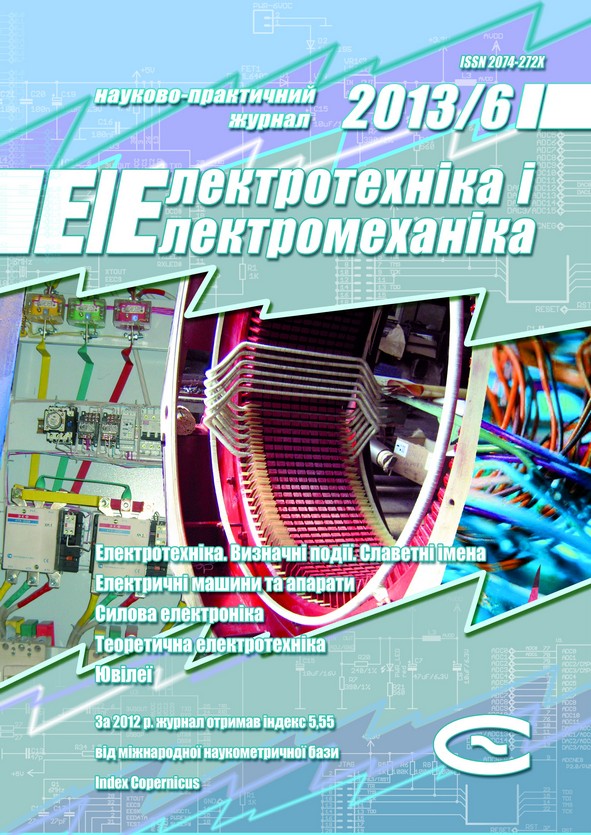3D-MODELING FOR DETERMINATION OF AXIAL FORCES ACTING IN ELEMENTS OF THE END ZONE OF POWER TURBOGENERATORS
DOI:
https://doi.org/10.20998/2074-272X.2013.6.03Keywords:
end zone of power turbogenerator, 3D-mathematical model of electromagnetic fieldAbstract
A field mathematical model of the end zone of a powerful generator type TVV-1000-2U3 in the three-dimensional setting is developed. The modeling of the nominal mode of operation of the turbogenerator is done. The distribution of the electromagnetic field, eddy currents, and the Ampere force appearing in such elements of the end zone of turbogenerator as the pressure plate, push pins and electrically conductive screen.
References
Vaskossky Y.M., Shumilov Y.A., Shtogrin A.V. Analysis axial forces disturbing vibration in the sta`tor core of a powerful turbogenerator // Electrotechnica і electroenergetika – 2009. – №2. – P. 25-30.
Ivanova V.S. The nature of fatigue metals. - Moscow, Metallurgy, 1965. - 456 p.
Demidyuk B.M., Vladimir Kuzmin, Shpatenko V.S. About the development of physically meaningful approach to the analysis of power and energy processes in the elements of the magnetic cores of electrical machines // News of Kremenchuk Sovereign polіtehnіch University Mykhailo Ostrogradsky name - Vipusk 3/2007 (44 ) Part 1. - P. 51 - 55.
Downloads
Published
How to Cite
Issue
Section
License
Copyright (c) 2015 Y. A. Gaydenko, T. S. Vishnevskiy, A. V. Shtogrin

This work is licensed under a Creative Commons Attribution-NonCommercial 4.0 International License.
Authors who publish with this journal agree to the following terms:
1. Authors retain copyright and grant the journal right of first publication with the work simultaneously licensed under a Creative Commons Attribution License that allows others to share the work with an acknowledgement of the work's authorship and initial publication in this journal.
2. Authors are able to enter into separate, additional contractual arrangements for the non-exclusive distribution of the journal's published version of the work (e.g., post it to an institutional repository or publish it in a book), with an acknowledgement of its initial publication in this journal.
3. Authors are permitted and encouraged to post their work online (e.g., in institutional repositories or on their website) prior to and during the submission process, as it can lead to productive exchanges, as well as earlier and greater citation of published work.





